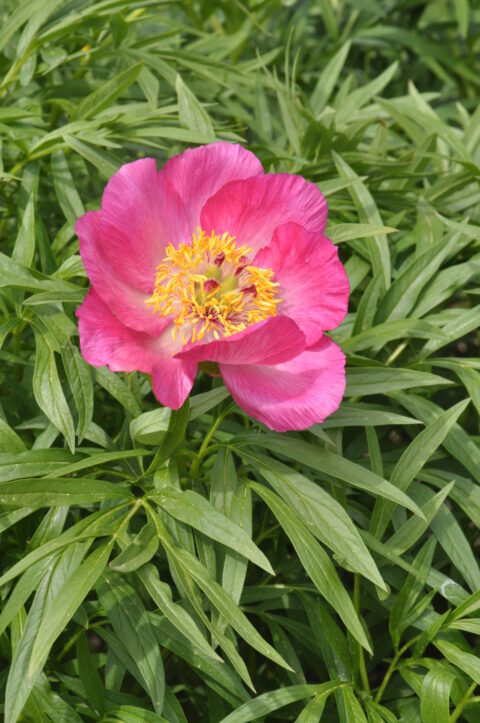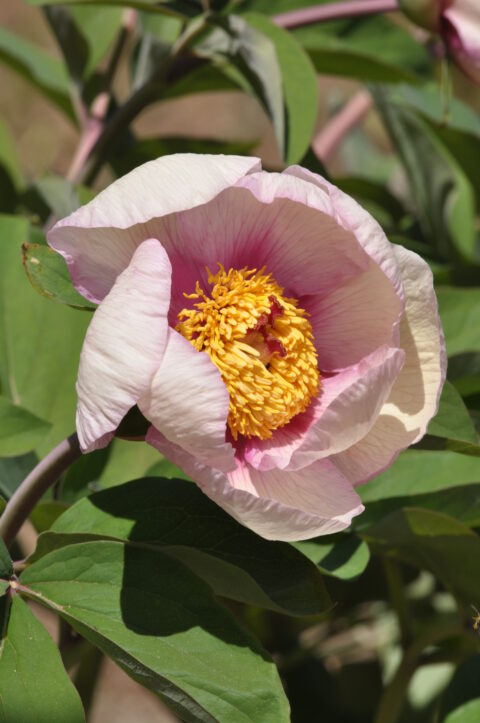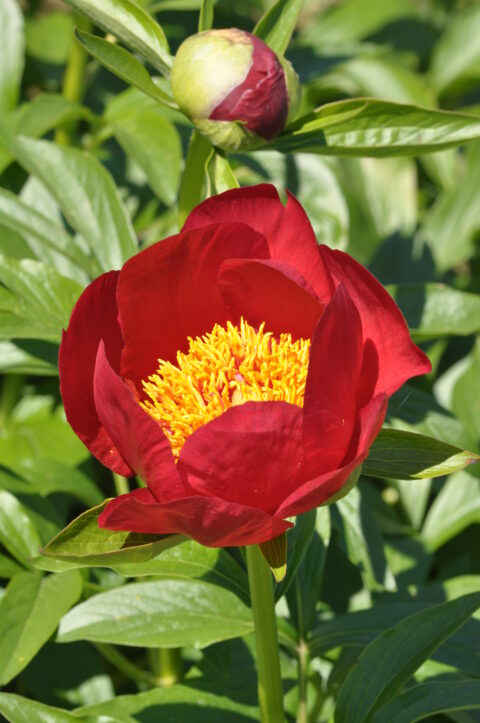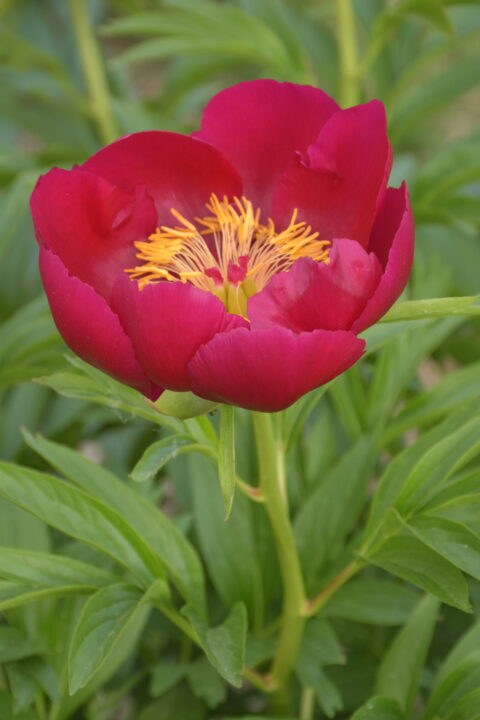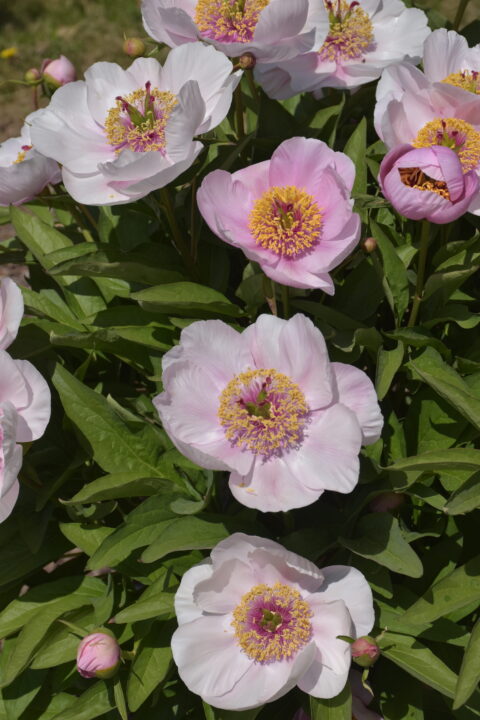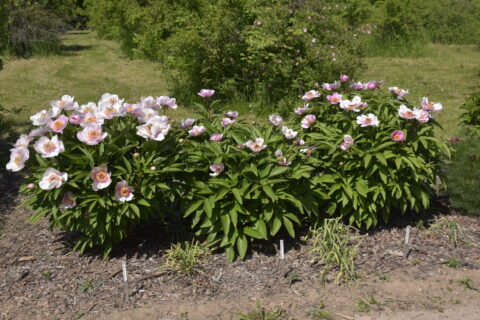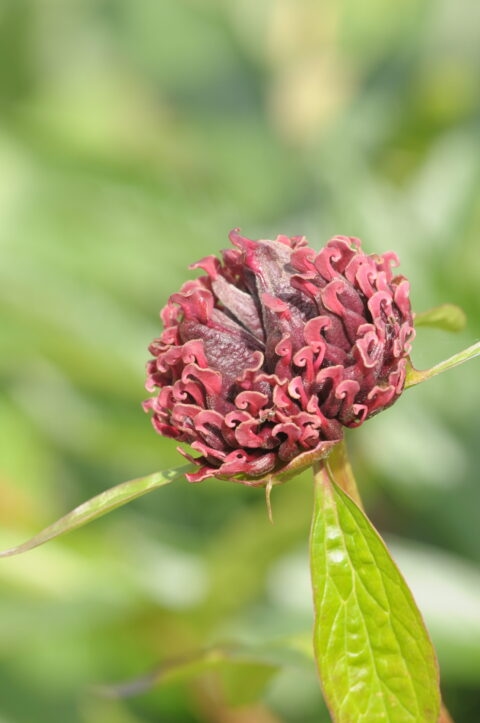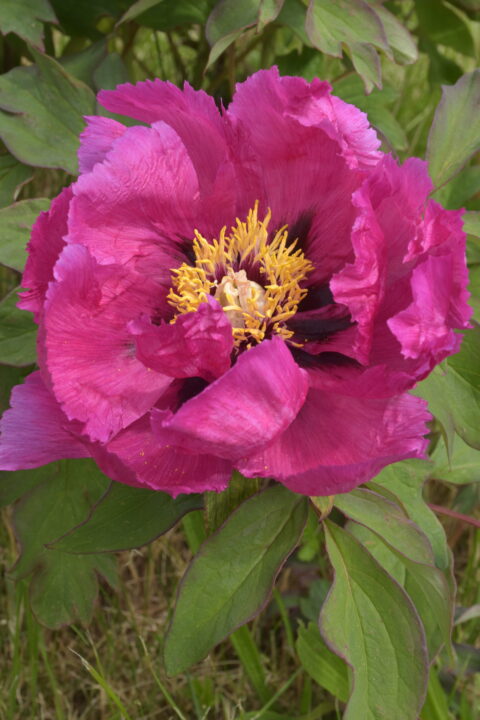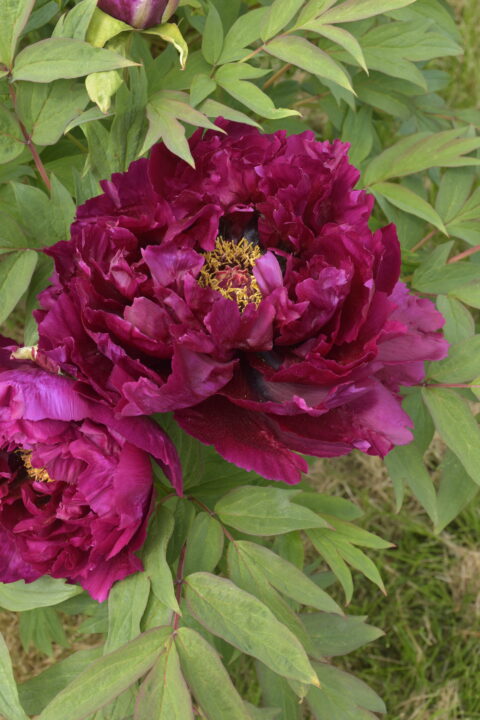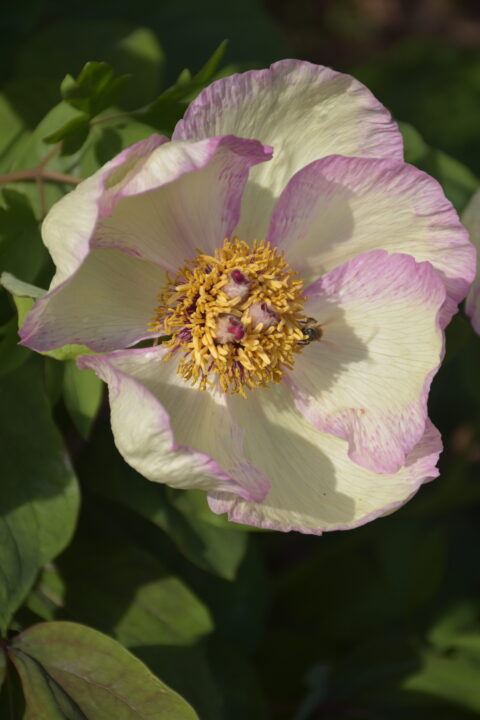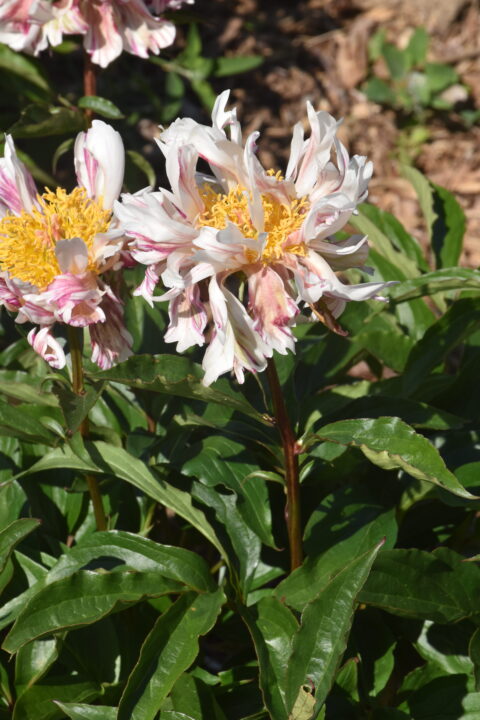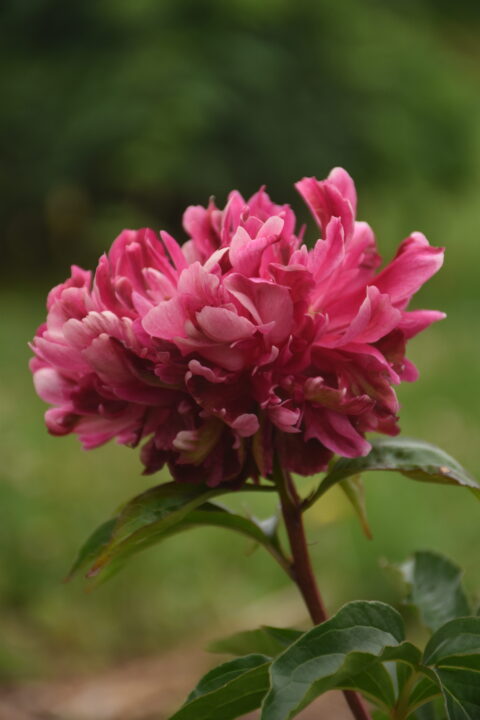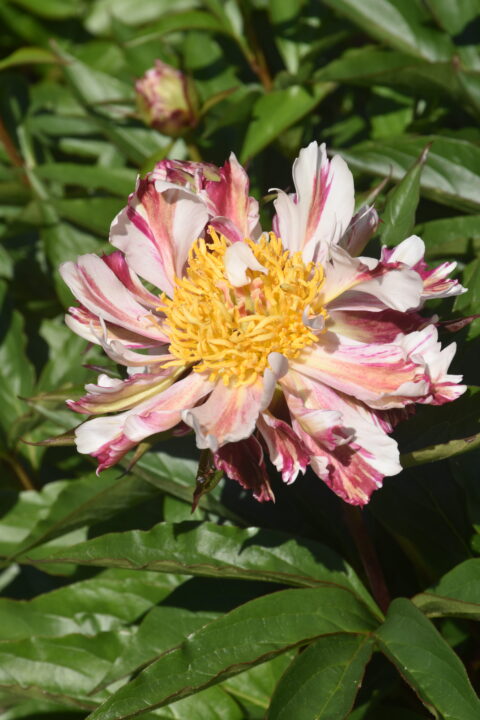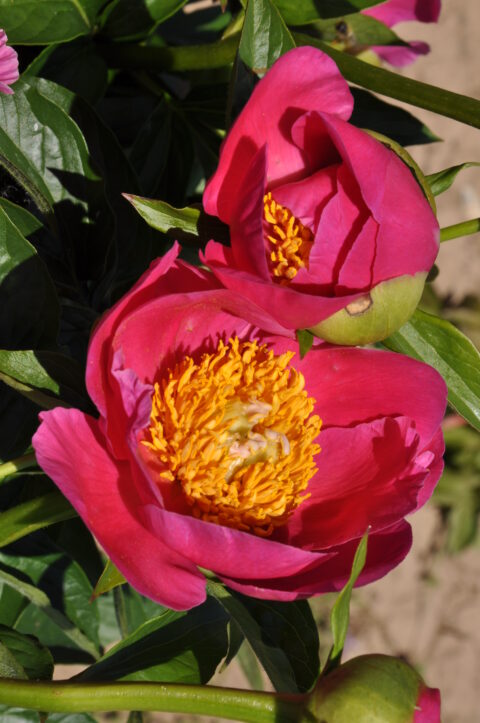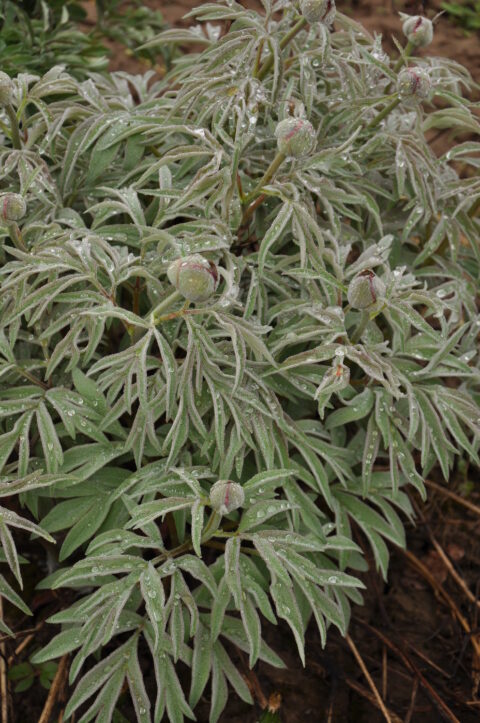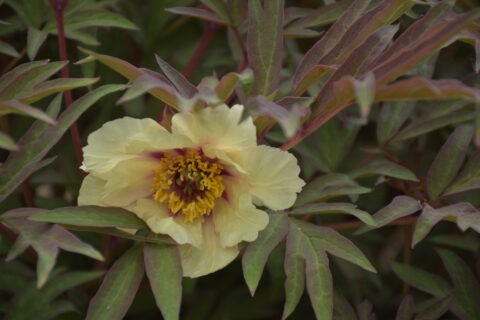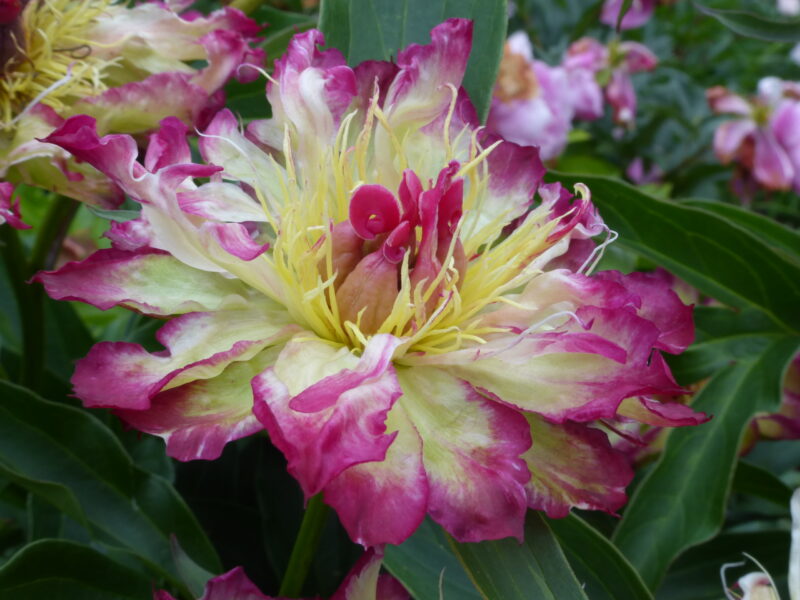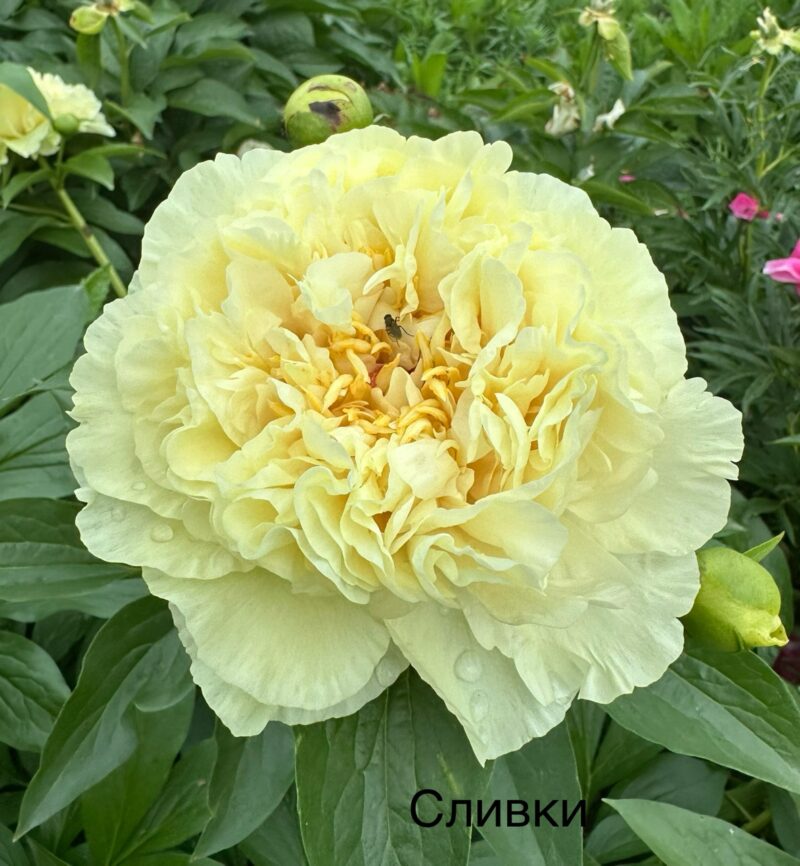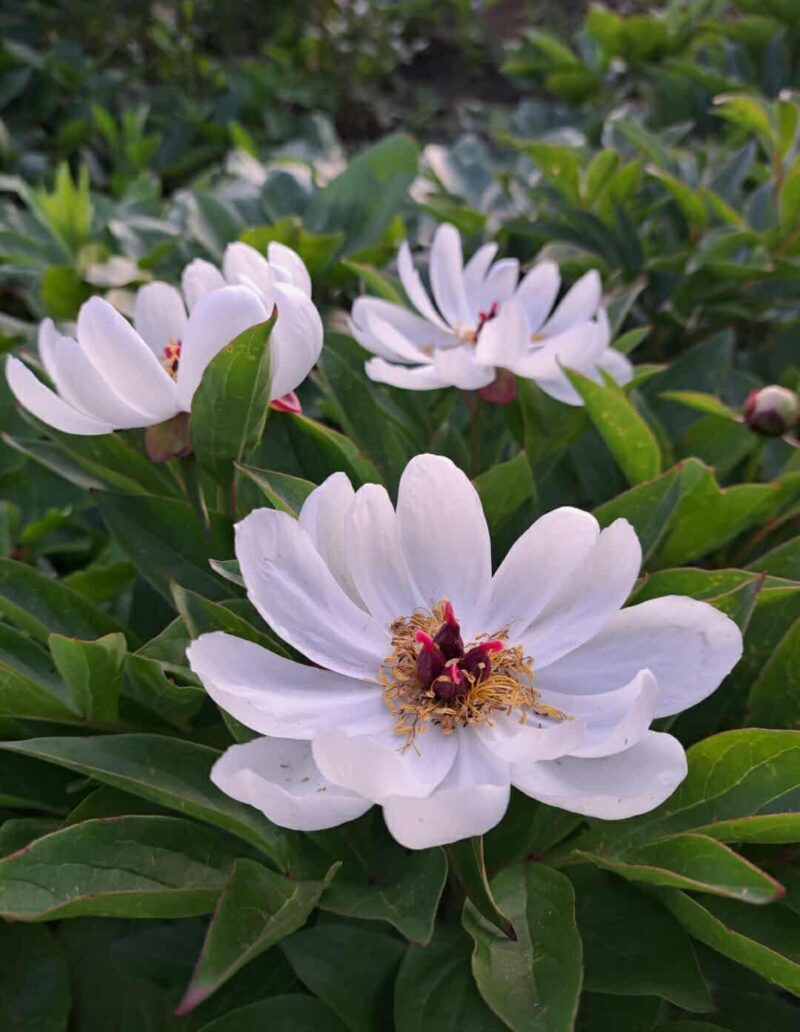Pavel Sekerka
Country:
Czech Republic, Prague
Short biography:
I was born in 1965. I graduated from the Faculty of Natural Sciences of Charles University in Prague. Since 1992 I have worked at the Prague Botanical Garden and since 2010 at the Průhonice Botanical Garden. I am divorced, have two children and two grandchildren.
More information:
https://cs.wikipedia.org/wiki/Pavel_Sekerka
https://www.facebook.com/profile.php?id=100010875904568
How did you first get involved in peony hybridizing?
As a curator of collections in a botanical garden, I saw the variability in plants obtained by sowing seeds from Index Seminum. From them also came the first varieties – Paeonia anomala Forest Sprite and Paeonia Early Caucasian. Then I began intentional crossing.
What was your starting material for your hybridizing?
Genetic sources of our varieties:
Original collection of the Průhonice Botanical Garden
Plants obtained during expedition collections
Purchases of tree peonies in China
What are your goals in hybridizing peonies?
try new combinations
peonies with monstrous flower shape
very early flowering
purple leaf color
Do you mostly depend on open pollination or do you mostly make controlled crosses?
| 100% open | 50/50 | 100% controlled |
How large is your hybridizing program?
I try about 20 new combinations a year, up to 10 of which will produce germinating seeds. The number of seeds can range from 1 to 100. Each germinated seedling is grown to flower and evaluated.
Do you have any plants in the market?
We share plants with botanical gardens in the Czech Republic, Poland, Lithuania and Norway. We have given samples to GreenWorks (Holland) and Binny Plants (Scotland).
Can you describe a few of your plants that you consider the best or most beautiful and which are available now?
Erotikon, Pruhonice Friendship, Early Caucasian, French Poppy.
- Paeonia Erotikon
- Paeonia Erotikon
Paeonia ‘Erotikon’ (Sekerka, 2020). P. obovata x P. tenuifolia. First bloomed 2012, first propagated 2015. Has been distributed under this name to a number of botanical gardens in Europe. The name and description have also been previously published in two Czech magazines, Zahrádká? and Zahradnictví. Very early season of bloom. SINGLE flower form. Up facing flowers, 1 bloom per stem, size 3½ inches (9 cm). No fragrance. Pale red with purplish undertones (RHS:67A). Base of petals lack colour, with color gradually bleeding in and getting stronger to 30% of petals’ length. Petals rounded, their edges lightly and evenly crinkled, 1¼ inches wide (3.5 cm). Average of 4 carpels, green, moderately hairy. Stigmas reddish-purple with normal anatomy, fertile. Pollen-bearing stamens, filaments reddish-purple at the very base, then creamy-white to the anthers. Staminodal disc evident, but incomplete. Early foliage green washed bronze, stems reddish, both maturing to green at flowering. Foliage typical of the “fernleaf hybrid” types. Upright growth, height 18½ inches (47 cm). As a seedling the flower triggered a response which inspired using name of the famous 1929 Czech film “Erotikon.”
- Early Caucasian (Sekerka, 2020)
Early Caucasian (Sekerka, 2020). P. mlokosewitschii, open pollinated, likely by another species of the Caucasus. First bloomed, and first propagated, in the 1990’s. Has been distributed under this name to a number of botanical gardens in Europe. The name and description have also been previously published in two Czech magazines, Zahrádká? and Zahradnictví. Very early bloom, earlier than P. mlokosewitschii itself. Ten-petalled SINGLE with two rows of guard petals, 1 bloom per stem, 5½ inches in size (14 cm). No fragrance. Up facing flowers are pale yellow (RHS:160D) with raspberry flares extending the petals’ length (RHS:71C). Flares have indistinct edges and pigment bleeds along the petal’s veins to the edges. Petals are rounded and held cupped. Average of 3 carpels, pale, and thickly covered with white indumentum. Reddish purple stigmas have normal anatomy. Pollen-bearing stamens, filaments reddish-purple (RHS:61A). Well-developed staminodal disc, of similar hue, but paler than the stigmas. Early foliage green washed purplish bronze. Stems, petioles, veins of leaves and flower buds are hairy. At flowering, leaves are green, somewhat purplish along the edges. Vigorous plant with upright growth. The name relates to The Caucasus, the area between the Caspian and Black Seas where P. mlokosewitschii grows wild.
- French Poppy (Uljana Blažková / Pavel Sekerka, 2020)
French Poppy (Uljana Blažková / Pavel Sekerka, 2020). Parentage possibly ‘Gedenken’ open pollinated. First bloomed 1980’s, first propagated 2015. Has been distributed under this name to a number of botanical gardens in Europe. The name and description have also been previously published in two Czech magazines, Zahrádká? and Zahradnictví. Early/Mid season bloom. Flower form SINGLE. One bloom per stem, 7½ inches in size (19 cm) with up-facing flowers. Red flowers (RHS:46B), with two rows of guard petals, rounded, held cupped. Average of 3 carpels, yellowish green, densely hairy. Stigmas red (RHS:52D) with normal anatomy, fertile. Pollen-bearing stamens, filaments red (RHS:46B). Well developed staminodal disc, white. Early foliage greenish-purple, stems, petioles, and veins of leaves have relatively long white hairs, or indumentum. Foliage bright green at flowering. Upright growth to 33 inches (83 cm). Long bloom period and flowers hold color well. As carpels mature they become large and suitable for decoration. Named for the color and form of the flower, reminiscent of the poppy Papaver rhoeas, often portrayed in French Impressionist paintings. This the first introduction in the Garden’s “Poppy” series.
Within your current seedlings, what are the most promising ones?
Paeonia ‘Hoarfrost’
Paeonia ‘Rose of Parnass’
Paeonia ‘Flowering Cone’
Paeonia lactiflora ‘Bowl of Beauty’ × P. peregrina ex Murfatlar 2
Paeonia lactiflora ‘Hinode Sekai’ × P. obovata
Paeonia officinalis ‘Hoarfrost’
- Paeonia lactiflora ‘Bowl of Beauty’ × P. peregrina ex Murfatlar 2
- Paeonia lactiflora Bowl of Beauty x P. peregrina ex Murfatlar
Paeonia lactiflora ‘Bowl of Beauty’ × P. peregrina ex Murfatlar 2
- Rose of Parnass
- Rose of Parnass
Paeonia ‘Rose of Parnass’
Paeonia lactiflora ‘Hinode Sekai’ x Paeonia obovata
- Flowering Cone
- Flowering Cone
Paeonia ‘Flowering Cone’
Some other seedlings (click and enlarge to see names or crosses):
Are you in contact or working together with other peony hybridizers?
Only with breeders in Central Europe
Do you have unregistered plants that are not good enough to introduce but have something ‘special’?
The problem with the introduction of our plants is mainly due to insufficient working capacity in the botanical garden.
Would you like to exchange such ‘hybridizers plants’ with other hybridizers?
If breeders are interested, they can order some plants through the database of the National Genetic Resources Program – GRIN Czech. Consent to the MTA protocol is required. Alternatively, if they will cover the shipping costs (postage, certificates) directly at the Průhonice Botanical Garden. The number of shared plants is limited by working possibilities and the size of the plants.
E-mail of this person is known to the author. If you want to contact this hybridizer, we can forward your message.

